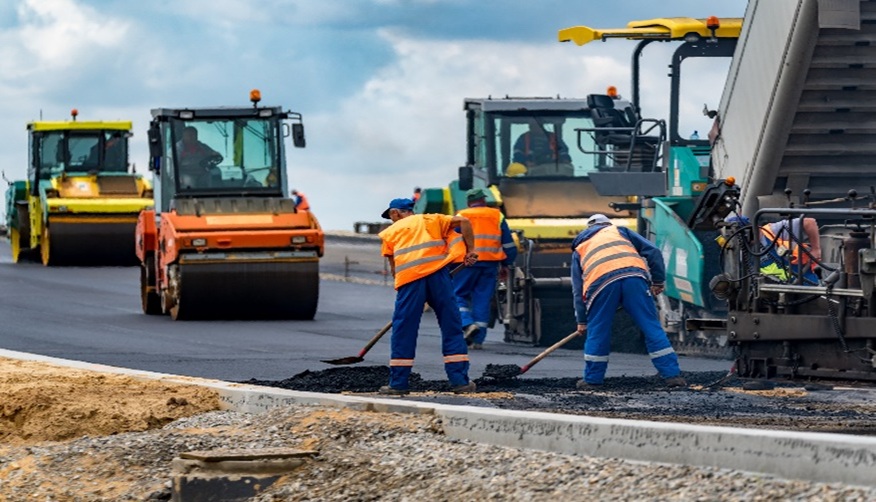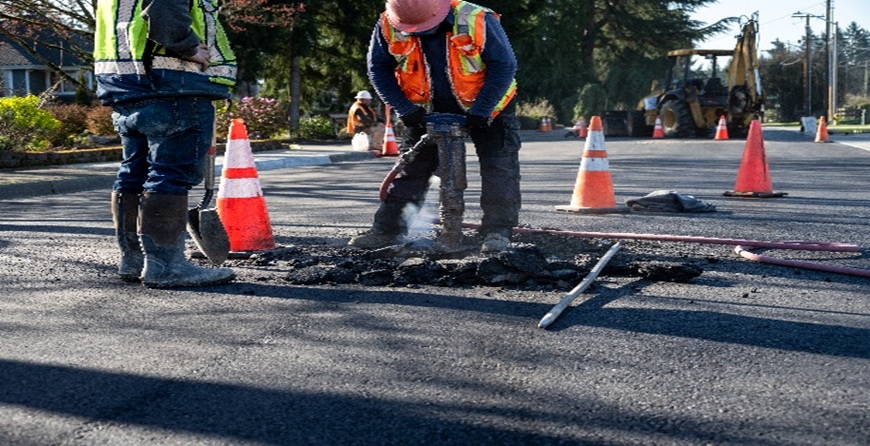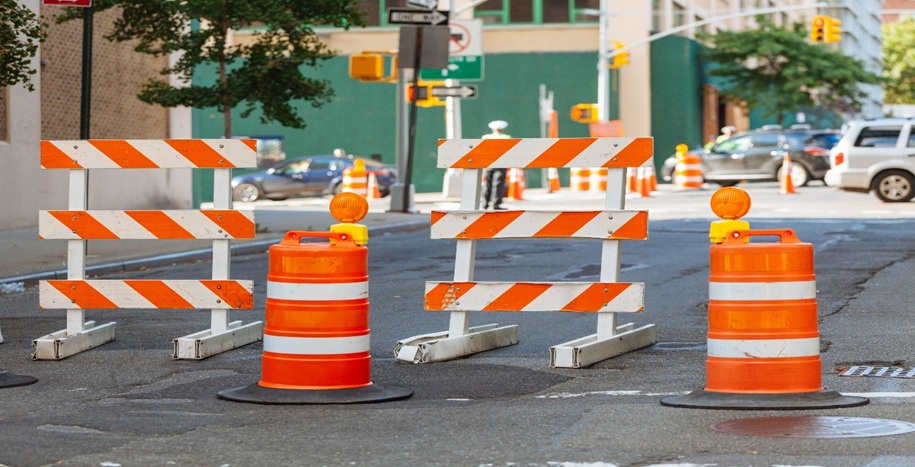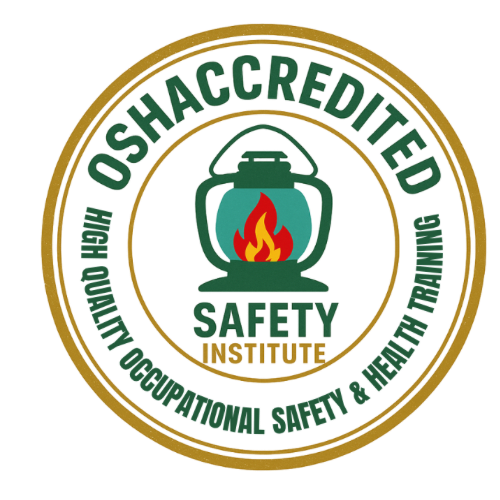Work Zone Traffic Safety: Protecting Workers with Safety Training
Work Zone Traffic Safety: Protecting Workers with Safety Training
Work zones are essential for maintaining and improving our infrastructure, but they also present significant hazards. These areas often bring together high-speed traffic and workers who are performing tasks near busy roadways. Ensuring the safety of workers in these zones is critical, and it requires a combination of safety training, careful planning, and adherence to strict guidelines. In this blog, we’ll explore how safety training, including online safety training and OSHA courses, plays a vital role in work zone traffic safety, and how these efforts help mitigate risks to both workers and drivers.
The Importance of Work Zone Traffic Safety
Work zones can be inherently dangerous environments. According to the National Work Zone Safety Information Clearinghouse (NWZIC), there are more than 100 work zone fatalities annually in the United States alone, with thousands more injured. In 2021, the Federal Highway Administration (FHWA) reported 857 work zone-related fatalities, underscoring the risks faced by workers and motorists alike. Therefore, proactive safety measures like comprehensive safety and health training, well-designed traffic control plans, and compliance with established safety standards are crucial for protecting everyone involved.
The Role of Safety Training in Work Zone Safety
The cornerstone of a safe work zone is well-trained personnel. Safety training is an essential first step in ensuring that workers understand the risks they face and how to mitigate them. Various forms of safety training, including online safety training, OSHA safety courses, and specialized safety courses for specific tasks, help workers develop the necessary skills to work safely in high-risk environments like work zones.

Online Safety Training
Online safety training has gained immense popularity because it allows workers to complete required safety courses at their own pace, making it an accessible option for those with varying schedules. Online safety courses are an effective tool in work zone safety because they can cover a wide array of topics, from general hazard awareness to specific topics like flagging procedures or equipment safety. Online safety and training ensure that workers are well-prepared before stepping onto the job site.
OSHA Training and OSHA Courses
The Occupational Safety and Health Administration (OSHA) sets rigorous standards for workplace safety, including in work zones. OSHA training, such as the OSHA 10-Hour and OSHA 30-Hour courses, provide workers with foundational knowledge of safety protocols and hazard recognition. OSHA courses focus on identifying risks, ensuring compliance with safety regulations, and understanding the consequences of unsafe practices. These safety training sessions help foster a culture of safety by teaching workers how to prevent accidents, recognize warning signs, and respond to emergencies.
Specific Risks in Work Zones
While work zone safety training is important, understanding the specific risks in these environments is crucial to reducing accidents and fatalities. These risks include not only the presence of heavy equipment and roadwork but also the unique hazards posed by traffic. Let’s look at some of these risks in more detail.
Roadway Worker Risks
Roadway workers face numerous hazards, particularly from passing traffic. As construction, maintenance, and utility work occur on roadways, workers are often positioned in-close proximity to moving vehicles. Carefully structured safety training programs can make a significant difference in saving lives. The risk of being struck by a vehicle or equipment is a leading cause of work zone fatalities. In fact, the most common cause of worker fatalities in work zones is being hit by a vehicle. In addition to the risk of direct contact with vehicles, workers are also vulnerable to equipment malfunctions, falls, and exposure to hazardous materials.
Temporary Traffic Control Plans
Temporary Traffic Control (TTC) plans are essential for managing traffic flow in work zones while keeping both workers and drivers safe. These plans outline the proper use of traffic control devices such as cones, barricades, and signs, and they specify how lanes will be altered or closed to ensure smooth and safe traffic movement. Workers learn how to manage these devices through ongoing safety and health training. A well-designed TTC plan considers the traffic volume, speed limits, and types of work being conducted. When implemented correctly, a TTC plan reduces the risk of accidents and ensures that drivers are aware of potential hazards.
Protecting Workers in Work Zones
OSHA requires workers to wear personal protective equipment in construction on in work zones on roadways. OSHA laws are designed to protect workers from harm and danger in the workplace. Worker protection in work zones depends on several factors, including physical barriers, traffic control measures, and personal protective equipment (PPE). Personal protective equipment, such as reflective vests, hard hats, and safety boots, is necessary to keep workers visible and protected. In addition to PPE, work zones must be designed to provide clear barriers between workers and traffic.
Physical barriers like concrete barriers or temporary fencing can prevent vehicles from entering dangerous areas. The strategic placement of these barriers and the use of safety devices like attenuators can absorb impact energy if a vehicle collides with them, significantly reducing the severity of injuries.

Blind Spot Hazards
Worker and driver education are significant to maintain safety on our roadways. Therefore, safety training helps to create awareness to both the worker and driver of their responsibilities. The convenience of online safety training creates the opportunity for road uses and workers to educate themselves on OSHA laws and industry best practices. Blind spots present a significant hazard in work zones. Drivers and equipment operators often have limited visibility, which can lead to accidents. Flaggers and other workers must be aware of the blind spots around vehicles and machinery and take extra care to avoid areas where they cannot be seen. Ensuring that all workers are trained to understand blind spot hazards is a key component of work zone safety.
Suggested Spotting Signals
One effective way to minimize the risk of blind spot accidents is the use of spotting signals. A spotting signal is a visual communication system where workers and equipment operators use hand signals or flags to communicate, ensuring that all parties are aware of each other’s positions and intentions. Companies could invest in online safety and health training for their workforce and adopt popular well-known spotter signals for work zones. Safety training programs should include demonstrations and practice so that both the flagger and worker understand the signals being used. These signals help coordinate the movement of vehicles and machinery, reducing the risk of collisions or accidents. Workers should be properly trained in the use of these signals to ensure they are effective.
Work Zone Awareness
https://www.fdot.gov/agencyresources/workzone
Internal Traffic Control Plans (ITCP)
Internal Traffic Control Plans (ITCP) are an essential element of work zone safety. These plans focus on the movement of workers, vehicles, and equipment within the work zone itself. While the Temporary Traffic Control Plan deals with external traffic, the ITCP ensures that workers and vehicles within the work zone are also operating safely. It designates safe routes for pedestrians and equipment, prevents congestion, and minimizes the risk of accidents between workers and vehicles.
FDOT’s Smart Work Zone Initiative
https://transportationops.org/case-studies/fdots-smart-work-zone-initiative
Pre-Work Shift Safety Meetings
One of the best ways to enhance work zone safety is through pre-work shift safety meetings. These meetings serve as an opportunity to review safety procedures, discuss potential hazards, and ensure that everyone understands their role in maintaining a safe work environment. Pre-work meetings can address specific risks related to the day’s tasks, including changes in traffic patterns, equipment usage, or potential weather-related hazards. These meetings help ensure that all workers are on the same page and prepared to respond to any challenges that may arise.
MUTCD Requirements for Work Zones
The Manual on Uniform Traffic Control Devices (MUTCD) is owned and maintained by the Federal Highway Administration (FHWA), a division of the U.S. Department of Transportation. It is regulated by the FHWA, which sets the standards for traffic control devices on public roads to ensure uniformity and safety across the country. State and local transportation agencies are responsible for implementing the MUTCD guidelines within their jurisdictions, ensuring compliance with federal standards. The MUTCD sets forth standards for the design and use of traffic control devices in work zones. In addition, the MUTCD outlines the proper placement and design of devices like signs, cones, and barriers, ensuring that they provide clear and consistent information to drivers. For instance, temporary traffic control devices such as warning signs (e.g., “Work Zone Ahead”) must be strategically placed to give drivers adequate time to adjust their speed and actions before reaching the work zone.
The MUTCD also specifies the use of appropriate signage to communicate with both workers and drivers, such as “Flagger Ahead” signs to warn drivers of flaggers in the work zone. These standardized devices are designed to reduce confusion and improve traffic flow through work zones. Organizations like the National Highway Institute (NHI), and the National Safety Council (NSC) offers safety training on MUTCD standards for public roadways.
MUTCD Regulations on Traffic Control Barricades, Cones and Drums
https://universalsigns.com/mutcd-regulations-on-traffic-control-barricades-cones-and-drums/

FDOT Safety Tips for Work Zones
The Florida Department of Transportation (FDOT) has specific guidelines to ensure safety in work zones. Some key FDOT requirements include:
BE ALERT: Always expect the unexpected when entering a work zone. Drivers should be prepared for sudden changes in traffic flow or the appearance of workers and equipment.
DON’T TAILGATE: Work zones often require vehicles to stop unexpectedly. Tailgating increases the risk of rear-end collisions.
DON’T SPEED IN THE WORK ZONE: Adhering to posted speed limits in work zones is crucial to reducing accidents. Speeding not only puts workers at risk but also decreases the time drivers have-to react to unexpected conditions.
DON’T CHANGE LANES IN THE WORK ZONE: Lane changes can be dangerous in work zones, where traffic is already re-routed or constrained. Avoid unnecessary lane changes to maintain safe distances from workers and equipment.
MINIMIZE DISTRACTIONS: Drivers should stay focused on the road and avoid distractions like cell phone use or adjusting the radio. Distractions reduce reaction times and can lead to accidents.
EXPECT THE UNEXPECTED: Always be on the lookout for workers, equipment, and sudden changes in road conditions. Stay alert to maintain safety for yourself and other workers.
Conclusion
Work zone safety is a shared responsibility that involves proper planning, training, and adherence to safety guidelines. By investing in comprehensive safety training, including OSHA training and online safety courses, workers and employers can significantly reduce the risks of accidents and fatalities in work zones. Temporary Traffic Control Plans, Internal Traffic Control Plans, and safety measures like blind spot awareness and pre-shift meetings all contribute to maintaining a safe work environment.
By following standards like the MUTCD and FDOT requirements and ensuring that workers are trained in proper safety protocols, we can help protect not only workers but also the drivers who navigate through these critical zones. Safety in work zones is not just about minimizing risks—it’s about saving lives and ensuring that the work being done to improve our infrastructure does not come at the cost of those who make it happen.
Author: Dr. O’Neil G. Blake, Chief Executive Officer (CEO) of OSHAccredited Safety Institute
MS., MBA., MSc., BSc, CSP., ASP., CSHM., CSMP., MRSA.
Date: 12-29-2024











